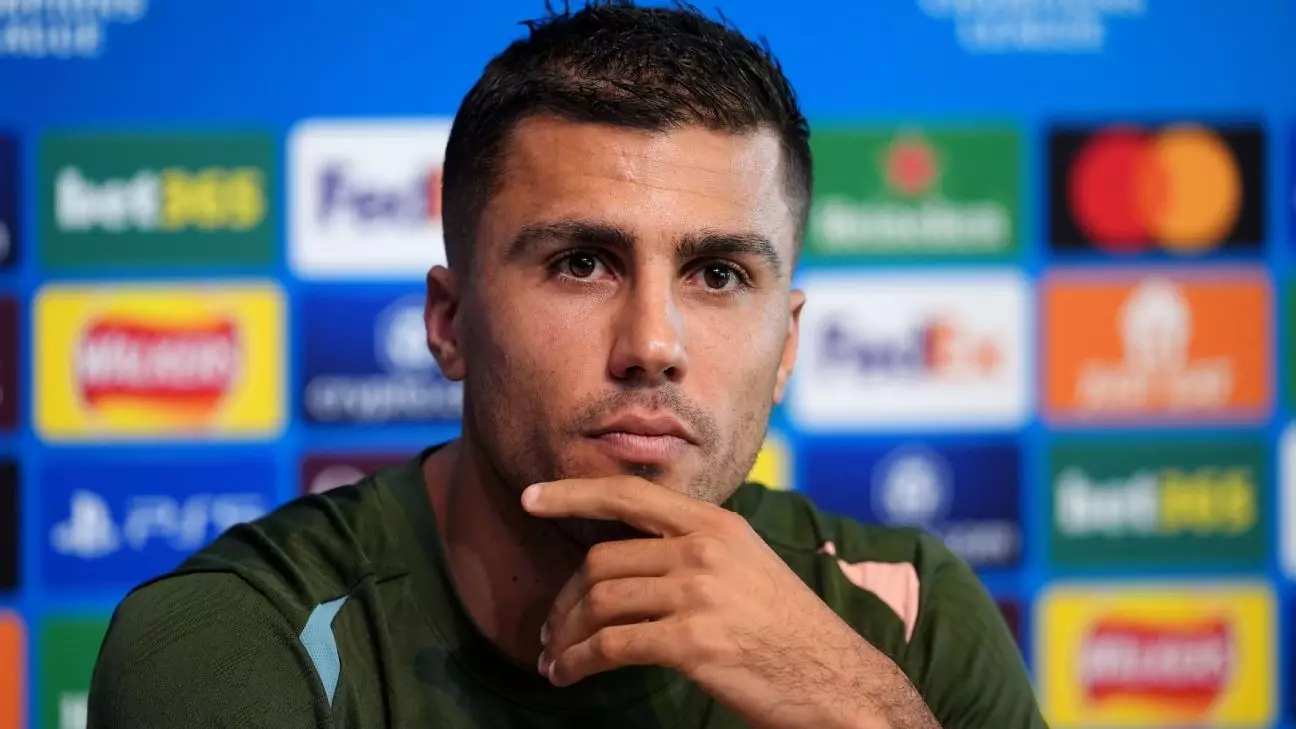In recent statements, Manchester City midfielder Rodri has publicly voiced the growing anxiety among football players regarding the relentless schedule they face. The increasing number of competitions and the expanded formats of existing tournaments have pushed the physical and mental limits of athletes. Rodri himself had a staggering workload last season, participating in 63 matches for both his club and national team. This extensive involvement remains unrelenting, with upcoming competitions like the revamped Champions League and the newly formatted Club World Cup looming on the horizon.
It is becoming increasingly apparent that many players feel the pinch of fatigue, and Rodri’s comments about the potential for a strike highlight a sentiment that is far from isolated. Many footballers share his perspective that the mounting pressure may soon result in a collective response, as they grapple with expectations that seem to overlook the physical toll on their bodies.
Rodri’s belief that players are nearing a breaking point is alarming yet thought-provoking. As he articulately states, the issue transcends individual players’ experiences, reflecting a broader consensus among athletes. The relentless pace of professional football, with its demand for participation in numerous competitions, raises legitimate concerns about the sustainability of such rigorous schedules. Rodri mentions that top-tier players could potentially participate in as many as 85 matches in a single season, a scenario that underscores the extremes to which they are pushed.
He draws attention to an aspect often overlooked in sports discussions: the fundamental human capacity for performance. Rodri’s assertion that 60-70 matches per season is unsustainable resonates with both athletes and observers of the sport. Research in sports science supports this notion, indicating that the quality of performance deteriorates significantly when players are stretched beyond 40-50 matches annually. This struggle for balance between competitive aspirations and physical endurance must become a focal point for football’s governing bodies.
The implications of an overly packed schedule extend beyond mere fatigue; they also raise significant issues surrounding player welfare. A season defined by such excessive commitments can lead to injury, burnout, and long-term health issues. Rodri’s frustration echoes a growing concern that athletes may soon have to adopt a more assertive stance in advocating for their health. The possibility of action, even in the form of a strike, reflects a pivotal point in how professional sports manage the relationship between athletes and the leagues that govern them.
As players like Rodri attain greater recognition—evidenced by his recent Ballon d’Or nomination—it becomes increasingly vital for decision-makers in football to take heed of their concerns. The sports industry must consider a recalibration of schedules that balances commercial interests with the physical capabilities of players.
Rodri’s steadfast commitment to Manchester City, despite speculation about a potential transfer to powerhouse clubs like Real Madrid, underscores his dedication. However, the larger conversation remains: how will the sport adapt to the needs of its athletes? As the football landscape continues to evolve, the sustainability of player workloads must be addressed. An open dialogue between stakeholders—players, clubs, and governing bodies—is crucial to crafting solutions that prioritize the health and performance of the athletes who make the game so thrilling. The future of football may depend on it.
